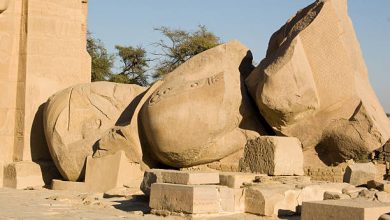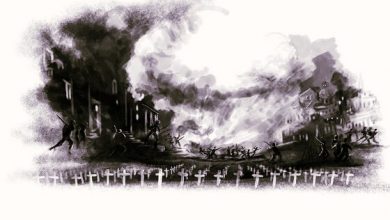
To Sleep by William Wordsworth is poem is written as a sonnet by the poet dedicated to Sleep. . This poem is written in the form of a sonnet in which Sleep is the poet’s Muse and is personified as a person that can hear, understand and respond to him and his pleas. In effect, Sleep, the ever evasive entity whom the poet hopelessly pursues is the Muse to whom this sonnet is dedicated. This poem is written as he tries to sleep, telling us what all he has done, though sleep still escapes him. The theme of this poem is insomnia and may also be viewed in context of unrequited love. This theme is in direct contrast to the title, which alludes to sleep.
To Sleep is modelled in a Petrarchan sonnet, also called an Italian sonnet. It consists of 14 lines, split into eight and six. The first eight lines are called the octave, and the rhyme scheme is ABBAABBA. This is also called an enclosed rhyme. The six lines that follow are called the sestet. Here, the rhyme scheme changes to CDCDCD. This CDCDCD rhyme scheme of six line is called called the Sicilian Sestet, named after the island region of Italy. The volta, or turn, of a Petrarchan sonnet is seen in these six lines.
To Sleep | Summary and Analysis
To Sleep | Analysis (Lines 1-4)
A flock of sheep that leisurely pass by
One after one; the sound of rain, and bees
Murmuring; the fall of rivers, winds and seas,
Smooth fields, white sheets of water, and pure sky —
The poem begins with Wordsworth describing all that he has imagined in order to help him fall asleep. He paints a picture for us through his words, of ambling sheep, the gentle sound of rain and waterfalls, the murmuring of bees, smooth fields, and a clear sky. This whole scene is idyllic and conducive to rest. Wordsworth is a lover of nature, and it is the theme of many of his poems, and here he describes the most relaxing scenery he can create in his mind’s eye.
He reflects his imagined scene through the words he uses, like leisurely, or murmuring, all meant to pull us into this calm peaceful state. This stanza is one that shows how the poet tries to lull himself to sleep. Yet, the long list of things he has imagined shows us that he has been in this position for quite a while, and has been trying to drop off to sleep without success.
The poet uses strong imagery in his descriptions, and also allows for vivid visualization by targeting different human senses. For example, Sheep leisurely passing by (sight), bees murmuring and rain (sound), and smooth fields (touch).
To Sleep | Analysis (Lines 5-8)
I’ve thought of all by turns, and still I lie
Sleepless; and soon the small birds’ melodies
Must hear, first utter’d from my orchard trees,
And the first cuckoo’s melancholy cry
The poet was imagining such a picturesque scene as he was trying to relax and go to sleep. He has tried to maximize his relaxation and peacefulness by giving himself the time to allow every bit of his imagination to work for him, yet still, he lies sleepless.
The use of enjambment at the end of the first line also allows for the implication that the poet is lying still, and unmoving. He is putting every ounce of effort he can into falling asleep, and he continues to be unsuccessful.
He knows the night is at its end, and that the birds will sing soon and dawn will break. The cuckoo’s melancholy cry mirrors his own dejection, as he could not experience the sweet escape of sleep. The cry may be melancholy to him because he is awake to hear it.
To Sleep | Analysis (Lines 9-14)
Even thus last night, and two nights more I lay,
And could not win thee, Sleep, by any stealth:
So do not let me wear to-night away
Without thee what is all the morning’s wealth?
Come, blessed barrier between day and day,
Dear mother of fresh thoughts and joyous health!
This is the volta, or the turn, of the Petrarchan sonnet. It represents a sudden change in the poet’s emotions in the poem.
The emotion in the poem shifts from one of peace, to desperation and frustration. Three nights in a row he has not slept, and he personifies sleep into a living, breathing being that he has lost. There was no way for him to win, even though he tried to be stealthy.
The reinvigoration that one feels after a good night’s sleep is the morning’s wealth. The songs of the birds and the cuckoos call may have brought him joy, had he managed to overcome his insomnia. The beauty of each day is marred by fatigue and the loss of proper rest. The abundance of this wealth slips out of his grasp, as the lack of sleep deems it useless.
He asks the personified Sleep to bless him with rest, referring to it as the barrier between days. He personifies Sleep into a mother that births fresh thoughts and good health for him. Like a child asking his mother, he begs to be given what he wants.
This brings out his desperation because fresh ideas and clarity of mind are irreplaceable to a poet, and this is also the wealth that he loses due to his insomnia. The fresh thoughts and joyous health support him in doing his life’s work, so lack of sleep makes him feel as though he cannot properly live his own life.
To Sleep | About The Poet
William Wordsworth is hailed as one of the founders of English Romanticism. In his poetry, he reflected his fierce love for nature, and he insisted on using only common language to make his poetry universal. His early life was spent surrounded by earth’s natural beauty, and this brought about his love for nature and man’s relationship to it.
In his time, Wordsworth was one of the most criticized poets and faced great contempt from several literary reviewers. However, thanks to the publication of ‘The River Duddon’ in 1820, he became more widely accepted as a poet, to laypeople and critics alike.
His first poem ‘An Evening Walk’ was published in 1793, quickly followed by ‘Descriptive Sketches’. Some of his famous poems are ‘Daffodils’, ‘The Solitary Reaper’, and ‘Tintern Abbey’.
William Wordsworth died on 23 April 1850, in the United Kingdom.




A good analysis